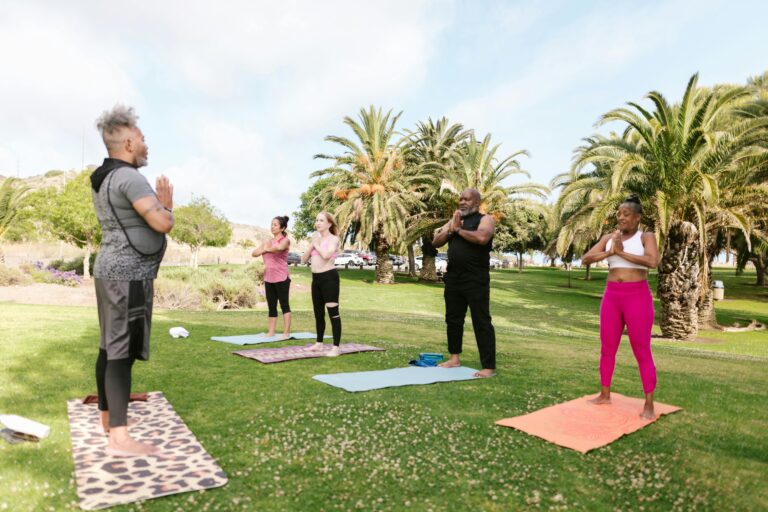People are tired, stressed, and overwhelmed, which is why they are seeking places that help them truly unwind and reset.
This growing desire for balance has fueled the rise of wellness tourism. McKinsey’s survey reveals that Gen Z and Millennials are more likely to travel for wellness retreats. These young cohorts, who make up around 43% of the total population, are redefining what travel means.
For hotels, this opens a golden opportunity to evolve beyond comfort and become wellness retreats. Many hotels are partnering with hotel renovation companies to modernize their spaces and meet this growing demand for wellness-focused environments.
If your hotel doesn’t offer deep wellness solutions, you risk losing sophisticated, high-spending travelers. Here, we’ll share a few ways you can transform your hotel into a thriving wellness retreat.
#1 Create Dedicated Wellness Suites
Standard hotel rooms are fine, but wellness suites are something special. Don’t confuse them with rooms with fancy toiletries. They are designed specifically to help guests relax, sleep better, and feel refreshed.
A comfortable bed is the most desired amenity after travel for 90% of people. Think beyond basic luxury bedding. Specialized smart beds are great options. Their connected technology helps guests fall asleep faster and stay asleep longer.
Install air purification units to ensure clean, fresh air for every guest. These advanced systems reduce common allergens, mold spores, and microbes in the air. Guests prone to seasonal allergies will appreciate this.
Replace harsh overhead lights with dimmable, warm-tone options, and install blackout curtains or smart blinds that respond to natural light cycles. Consider soundproofing the rooms. This helps guests escape the hustle and bustle of the outside world.
Offer wellness amenities that guests can use in their rooms. Yoga mats, resistance bands, meditation cushions, and foam rollers are great options. Include a guide with simple exercises or stretches they can do. Some hotels offer in-room sound machines or apps with guided meditations.
#2 Embrace Biophilic Design
Biophilic design, or the concept of bringing the outdoors inside, has become one of the most powerful trends in hospitality.
This approach goes far beyond decoration. It significantly reduces guest stress and improves cognitive function. Most importantly, guests are proven to be willing to pay a premium for high-quality biophilic spaces.
Use natural materials throughout your property. Wood flooring and furniture bring warmth. Water features create soothing ambient sounds. Fountains in the lobby or courtyard provide visual and auditory appeal. Some hotels incorporate reflecting pools or small streams. The sound of running water naturally calms the nervous system.
Take the concept outdoors, too. Create serene garden pathways, meditation corners, or water features that encourage guests to linger. Outdoor reading nooks surrounded by nature can become signature photo spots that naturally market your hotel through social media.
The 1 Hotel Brooklyn Bridge exemplifies this approach. Amerail Systems notes that it features ample natural light, living green walls, and reclaimed materials. This creates a calming atmosphere and enhances guest well-being.
#3 Introduce Immersive Spa and Holistic Treatments
A basic massage room isn’t enough anymore. Wellness travelers seek experiences that address their whole being, not just sore muscles.
Go beyond traditional spa services. Bring in practitioners for acupuncture, Reiki, and reflexology. These holistic treatments appeal to guests interested in alternative wellness approaches. Even skeptics often become believers after trying them.
Thermal facilities are absolute wellness staples that guests expect to see. Saunas, steam rooms, and pools offer experiences like detoxification and deep rejuvenation.
It’s true that these hydrotherapy features have high infrastructure costs. However, they strongly encourage guests to extend their stay. They also justify higher revenue from selling premium spa packages.
You can also offer guided sound baths using crystal bowls, gongs, and specialized sacred frequencies. These specific vibrations help align energy and profoundly calm the nervous system.
Fitness options should go beyond a standard gym. Offer yoga classes in multiple styles, from gentle restorative to challenging vinyasa. Add Pilates, tai chi, or barre. Outdoor activities like guided hikes, beach workouts, or paddleboard yoga connect guests with nature.
Mindfulness programming is important. Schedule daily meditation sessions for beginners and experienced practitioners. Host breathwork workshops that teach specific techniques. Offer one-on-one sessions with wellness coaches who can help guests set and achieve personal goals.
Cementing Your Status as a Wellness Destination
Creating a wellness retreat is about blending comfort, care, and consciousness. You need to design spaces that invite peace, offer experiences that heal, and build a brand that uplifts both guests.
Start with one area and expand gradually. More than a place to stay, your hotel can be a destination where people transform how they feel, recharge their batteries, and return home better than when they arrived. Isn’t that what you want?






